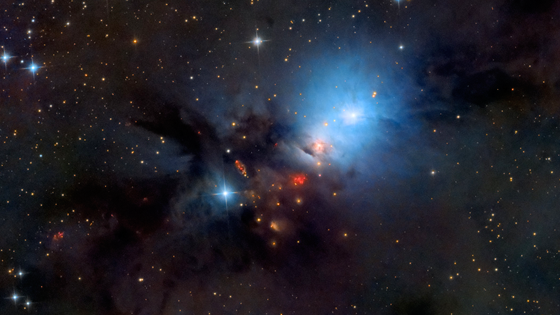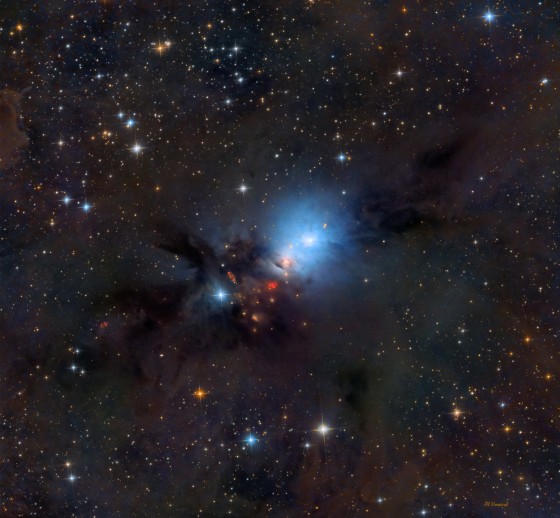Space Swoon: NGC 1333 got that gorgeous cosmic stardust
NGC 1333 , man. I remember that place. Cruising around in the Space-Ship Omega. Picking up Hot Space Folk. Getting them to laugh at my jokes, show me their trisected brain-nipples. It was wild. This image doesn’t really capture all of that, but it’s a good start.
NGC 1333 is seen in visible light as a reflection nebula, dominated by bluish hues characteristic of starlight reflected by dust. A mere 1,000 light-years distant toward the heroic constellation Perseus, it lies at the edge of a large, star-forming molecular cloud. This striking close-up view spans about two full moons on the sky or just over 15 light-years at the estimated distance of NGC 1333. It shows details of the dusty region along with hints of contrasting red emission from Herbig-Haro objects, jets and shocked glowing gas emanating from recently formed stars. In fact, NGC 1333 contains hundreds of stars less than a million years old, most still hidden from optical telescopes by the pervasive stardust. The chaotic environment may be similar to one in which our own Sun formed over 4.5 billion years ago. [NASA]





